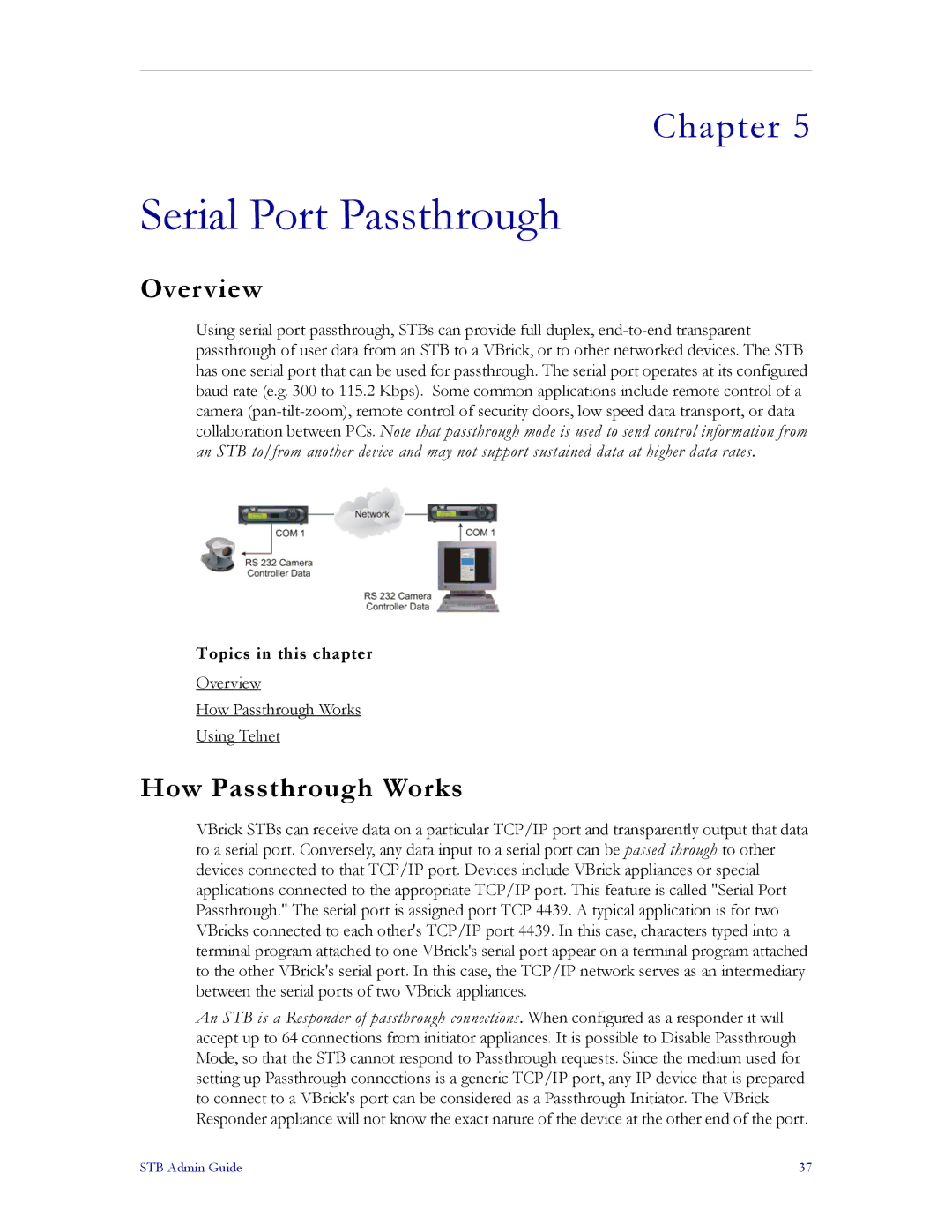
Chapter 5
Serial Port Passthrough
Overview
Using serial port passthrough, STBs can provide full duplex,
Topics in this chapter
Overview
How Passthrough Works
Using Telnet
How Passthrough Works
VBrick STBs can receive data on a particular TCP/IP port and transparently output that data to a serial port. Conversely, any data input to a serial port can be passed through to other devices connected to that TCP/IP port. Devices include VBrick appliances or special applications connected to the appropriate TCP/IP port. This feature is called "Serial Port Passthrough." The serial port is assigned port TCP 4439. A typical application is for two VBricks connected to each other's TCP/IP port 4439. In this case, characters typed into a terminal program attached to one VBrick's serial port appear on a terminal program attached to the other VBrick's serial port. In this case, the TCP/IP network serves as an intermediary between the serial ports of two VBrick appliances.
An STB is a Responder of passthrough connections. When configured as a responder it will accept up to 64 connections from initiator appliances. It is possible to Disable Passthrough Mode, so that the STB cannot respond to Passthrough requests. Since the medium used for setting up Passthrough connections is a generic TCP/IP port, any IP device that is prepared to connect to a VBrick's port can be considered as a Passthrough Initiator. The VBrick Responder appliance will not know the exact nature of the device at the other end of the port.
STB Admin Guide | 37 |
